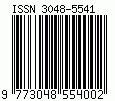Vol. 1 No. / Issue 2 April (2024): AN EMPIRICAL STUDY ON THE POSSIBLE ACCEPTANCE OF ARTIFICIAL WOMB TECHNOLOGY OVER TRADITIONAL METHODS OF PREGNANCY

Recent advancements in embryology and non-human animal research are paving the way for
exciting new possibilities in the field of reproductive science. On one hand, experiments in
embryology are pushing the boundaries of in vitro embryo sustenance. On the other hand,
developments in non-human animals are redefining the threshold of viability. When taken
together, it is clearly evident that these developments are narrowing the time that a child needs
to gestate in the maternal womb. Ectogenesis, through the use of “Artificial Womb Technology
(AWT)”, seeks to completely terminate the entire time a child requires to gestate and grow
inside a human body. This concept presents a paradigm shift in human reproduction1 as it
involves the complete gestation or development of human fetuses outside the maternal womb,
totally segregating the idea of childbirth from woman’s body. The research paper aims to
analyse the awareness about the Artificial Womb Technology (AWT) in the society. It also
seeks to examine the awareness, in the people, of the problems associated with pregnancy and
childbirth and its consequences on a woman’s body and life.

